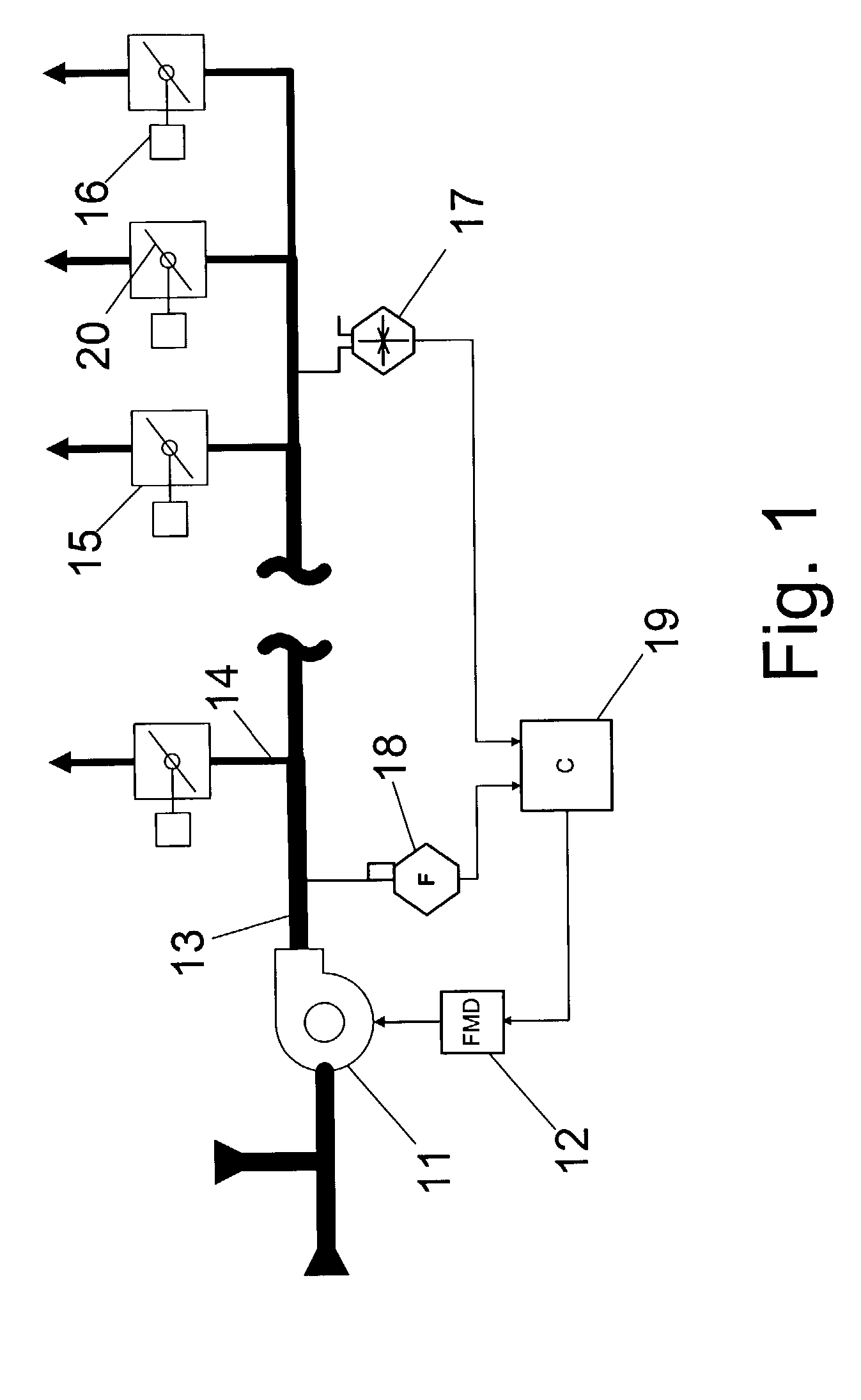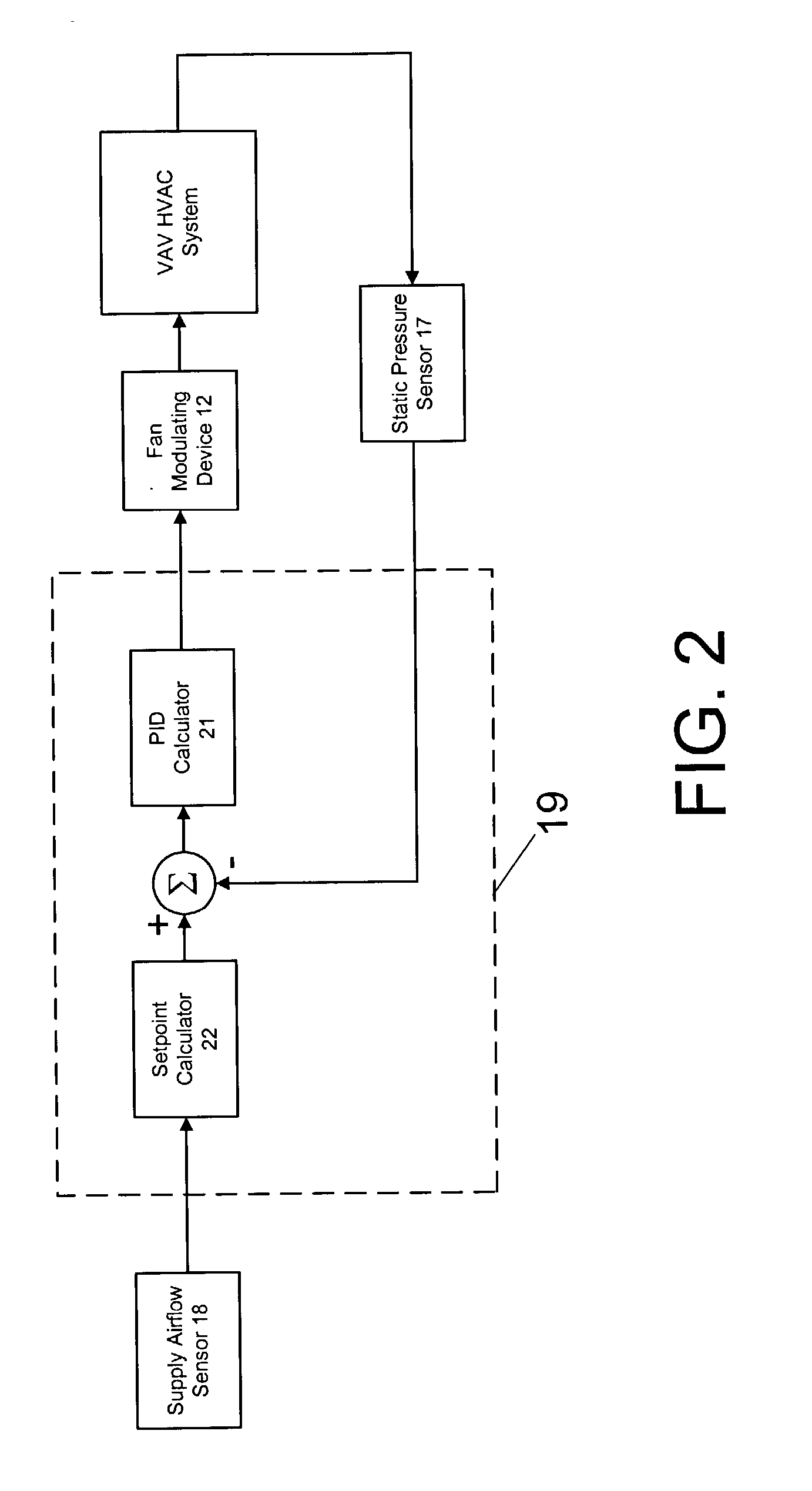Method and apparatus for controlling variable air volume supply fans in heating, ventilating, and air-conditioning systems
a technology of variable air volume and supply fans, which is applied in the direction of vehicle heating/cooling devices, railway components, machines/engines, etc., can solve the problems of increasing the cost of the hvac system, inefficient at part-load conditions, and sensitive to communication failures, so as to improve energy efficiency, improve energy efficiency, and improve energy efficiency
- Summary
- Abstract
- Description
- Claims
- Application Information
AI Technical Summary
Benefits of technology
Problems solved by technology
Method used
Image
Examples
Embodiment Construction
[0034] An alternative embodiment is shown in FIG. 4 and FIG. 5.
[0035] FIG. 4 shows a state transition diagram of an alternative embodiment for controlling the supply fan 11. In the alternative embodiment, the system has two modes: loss coefficient control mode 24 and constant pressure control mode 25. The loss coefficient control mode 24 has a loss coefficient calculator 26 which computes a loss coefficient, denoted as K, that is a function of the output of the static pressure sensor 17 and the output of the airflow sensor 18 as follows: 1 K = P Q n + C ( A )
[0036] where P denotes the output of the static pressure sensor 17, Q denotes the output of the airflow sensor 18, n is an exponent preferably between 1.0 and 2.0, and C is a constant used to ensure that the supply fan 11 will develop pressure and flow when the system is first turned on.
[0037] FIG. 5 shows a block diagram of the loss coefficient mode. The output of the static pressure sensor and the output of the airflow sensor ...
PUM
 Login to View More
Login to View More Abstract
Description
Claims
Application Information
 Login to View More
Login to View More - R&D
- Intellectual Property
- Life Sciences
- Materials
- Tech Scout
- Unparalleled Data Quality
- Higher Quality Content
- 60% Fewer Hallucinations
Browse by: Latest US Patents, China's latest patents, Technical Efficacy Thesaurus, Application Domain, Technology Topic, Popular Technical Reports.
© 2025 PatSnap. All rights reserved.Legal|Privacy policy|Modern Slavery Act Transparency Statement|Sitemap|About US| Contact US: help@patsnap.com



